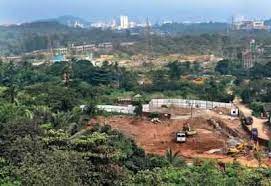The charm of the ecological unit called Sahyadri is there! The more you visit Sahyadri or the Western Ghats the more you realise how little you know about nature. Flipping through Sahyadri: Reminiscences and Reflections — edited by Sudhirendar Sharma and published by Prakruti Hulemalgi Brothers Uttara Kannada in Karnataka on behalf of the Save Western Ghats Campaign, one easily agrees with the editor that Sahyadri is a veritable laboratory where nature is still busy conducting its evolutionary experiments. The Sanskrit word Sahyadri truly defines the depth and dimension, richness and diversity of Sahyadri, re-christened as Western Ghats by the colonialists.
The book makes a fascinating reading and tells about the rich geography and the diversity of Sahyadri’s cultural heritage. According to Sharma, so ancient is its creation that some of the underlying rocks in the region are considered to be around two thousand million years old. Yet the region has been active with high potential for erosion and correspondingly high sedimentation yields. “Sahyadri like the South American rainforests form the girdle of the earth and help maintain global ecological balance”, opines Sharma. This fact may hold greater significance given that the monsoon occurrence, amongst other reasons, has direct correlation to the geological existence of the Sahyadri. The editor is quick enough to notice that the geomorphology of the Sahyadri has been its nemesis as high slopes, deep gorges and estuaries have become the most desired sites for hydroelectric and thermal power projects. Besides, extraction of mineral deposits has contributed to the destruction too. In a nutshell, ecological destruction continues in the name of development.
The book has three indiscrete sections. The first section comprises of three articles, while the second explores the ecological riches of the ecological unit. The last section captures the contours of current developmental challenges in the backdrop of the historic Silent Valley campaign. Sharma has included writings of the activists like Madhav Gadgil/S Narendra Prasad/KM Hegde, Claude Alvares, Ian Lockwood, KA Shaji, Shekar Dattatri, NA Naseer, Zafar Futehally, Sebastian Rodrigues and Max Martin in the volume.
According to the chapter “Mountains Without Snowpeak”, the geology of Sahyadri creates three distinct zones across its long stretch. In many ways, the region justifies it being called ghats as it offers the stairs or steps that are commonly associated with the term ‘ghat’.
In the chapter “Asserting the Right Cause”, Claude Alvares draws parallels between the Chipko Movement in the central Himalayan region (Uttarakhand) and the Appiko Movement in his home state of Karnataka. He points out that while the Chipko Movement’s fierce passion captured the hearts of people soon becoming a legend; the Appiko Movement in Karnataka began as a movement to protect forests and the agriculture surpassing beyond that stage to a wider consciousness of more important ecological tasks, particularly conservation of Sahyadri, the oxygen bank of the nation.
The chapter “The March That Was …” unravels the fact that the principal sufferers of forest loss in the Ghats have not been the animals alone but tribal and rural poor as well.
The chapter “Mine But Not Mine” expresses concern over mining in the state of Goa. Sebastian Rodrigues points out in this article that the history of mining in Goa is intrinsically linked with its colonial past and that who worked for the erstwhile Portuguese dynasty have huge stakes in the state’s mining industry today. According to him, the mining has badly damaged agriculture and silted rivers resulting in spontaneous unrest amongst the villagers.
The chapter “Silent Valley” warns that no battle in the field of conservation is ever final, and there is no guarantee that the Silent Valley will remain silent for all time to come. The last chapter “Silent Valley in Turmoil … Again” by Max Martin rightly concludes that the protection of biodiversity demands preserving the largest possible natural habitat unit, including the Silent Valley.
The beautiful photographs by NA Naseer, for whom forest is the first home, give true meaning to the words written in the book. In its Preface, Sharma rightly points out that the book captures the paradise that is Sahyadri, through NA Naseer’s lense; and the hell that has been let lose on it, through the pens of noted writers. In brief, the book captures the diversity of Sahyadri even as it examines the ecological wounds. It is worth spending Rs 200 for a 80-page colour volume on the rich biodiversity of Sahyadri!



